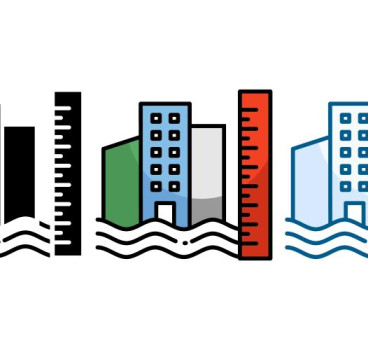The long way round isn’t always the right way
With information so readily available, we can be blinded by science. There is information overload and there seems to be a growing trend to overcomplicate matters. Whilst design, procurement and construction hasn't always been easy, it seems that layer-upon-layer is being added to projects that in many instances - or in many opinions - is just designed to complicate matters. This shouldn't be the case. Processes that simplify procurement, streamline delivery and enhance designs should be the norm. So why isn't this the case?
As humans we are naturally inquisitive and as a nation we are constantly looking to be at the forefront of everything we do. We are amongst the first to adopt new practices and have a thirst for driving innovation. We are becoming more aware of the importance of sustainability from a people, environment and economics perspective and more recently, that of well-being, with the wellness economy now one of the world's fastest-growing industries.
As such, it is no surprise that sustainability and well-being are currently fuelling a plethora of adventurous new architectural projects that embrace scientific research and data. But with these ever-more challenging projects comes larger and more complex supply chains, and what seems an ever-increasing number of standards to contend with. To make matters more complex, many standards overlap and duplicate elements with each other and we are being bombarded with information, research and data from every angle - and much of this information and many of the processes seem to be overly-complicated.
So the question is: how do we deliver projects efficiently and on budget when we are facing information overload? The answer is to keep it simple.
Take BREEAM, the internationally-recognised measure of sustainability for buildings and communities, as an example. Many people are unable to fully-understand BREEEM and all too often other people seem to make a great job of confusing them further and over-complicating it.
Understanding BREEAM shouldn't be complicated but it seems we need a way to translate what can be a complicated process into a simple, easy-to-understand one. At its core, BREEAM is simple - a process that allows you to make informed decisions to create better buildings – better in design, better in construction and better in operation. However, it is all too easy for the process to be over-complicated.
The trick is finding a BREEAM assessor that fully-understands a client's goals and objectives and can collaborate on a project from an early stage. With early involvement, a BREEAM assessor can help to guide a client and their supply chain through the process in the most efficient manner. Being involved at RIBA stage 1- preparation and brief - pays dividends when compared to getting involved at Stage 2 or 3 - concept design and design development - as by the time you get to these stages, important decisions have already been made.
This applies to communication, and not just communication between client and assessor - the whole supply chain needs to be in the loop. By understanding the decision-making process; by creating simple processes and being at the start of the discussion, we can influence and make sure the right route is chosen.
To put this into perspective (and at the expense of my brother-in-law): - I live in Bristol and my brother-in-law lives in Leeds. Having been to visit for the weekend he jumped in the car and heading-off, he hadn't made a decision about which route to take. However, knowing that the M1 goes to Leeds, he headed along the M4 to London, went around the M25 and up the M1.The journey took him eight hours. If he had planned the route in advance he would have taken the M5, a journey that would have taken three-and-a-half hours.
The point of the story - apart from the fact that my brother-in-law's sense of direction is awful - is that if he had planned in advance, he would have saved himself so much time. The same goes for BREEAM and other construction processes - spend time planning and it will be time well spent, as you will save time and effort further down the line. For my brother-in-law, sat-nav beckons; for construction professionals, find partners you can engage with early and who will work with you on shared goals. Otherwise, you could find yourself going the long way round.
By Darren Evans, Managing Director,Darren Evans Assessments
Additional Blogs

When fire breaks out who really knows the system
The story that caught my attention recently wasn’t about fire growth or building loss, it was about confusion. Specifically, the confusion faced by the fire service when arriving at buildings...
Read moreThe design and development of Nexus Layouts
When Zentia set out to rethink the suspended ceiling, the brief was clear: deliver greater creative freedom for designers, more distinctive visual identity for clients, and a solution that could keep...
Read more

The 100-year construction project or why longevity Is the new sustainability
For decades, the construction sector has defined sustainability through metrics such as operational energy, embodied carbon, material efficiency and circularity. These measures remain vital, but a...
Read more